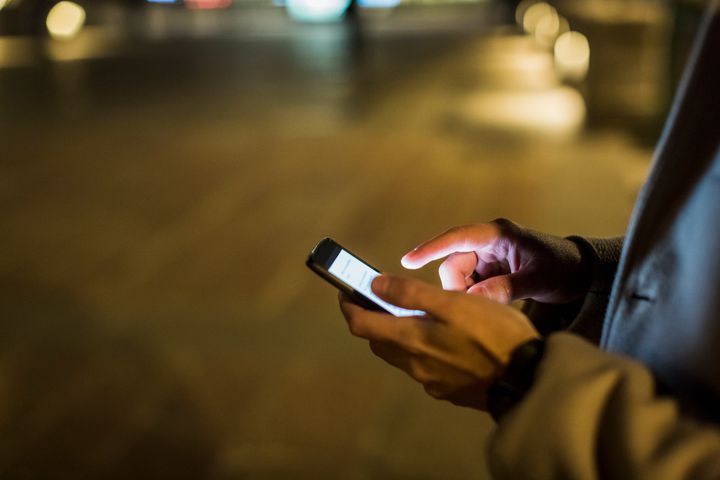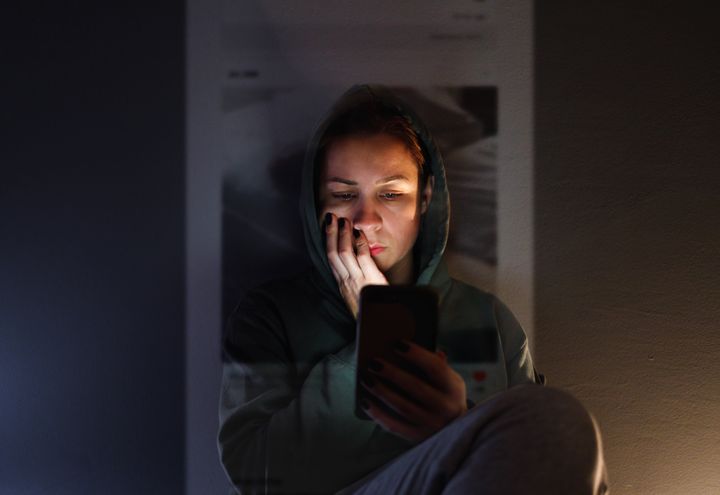
In Netflix’s hit British miniseries “Baby Reindeer,” Donny, a struggling comedian, is relentlessly stalked by Martha, a woman he meets at the neighborhood bar he works at in the evenings.
The show is based on comedian Richard Gadd’s autobiographical one-person show. In Donny, Gadd is playing a fictionalized version of himself. The Scottish comedian really was stalked in his early 20s by an older woman who, like Martha, flooded his email and social media with poorly spelled messages that were sexually explicit and threatening at times. (Baby Reindeer is one of the many weird, uncomfortably intimate nicknames Martha gives him.)
When Donny goes to the police with the messages as proof, they tell him not much can be done because the messages aren’t outwardly threatening. They also quiz him why it had taken him so long to report his perpetrator. (Of course, it doesn’t help that because Donny is a man and his stalker is a woman, male stalking victims don’t tend to be treated with the same seriousness as women who are stalked. Research also shows they’re slower to report, perhaps because of fear of not being taken seriously or believed.)
For people who’ve been online stalked, the powerlessness and frustration Donny feels in “Baby Reindeer” is all too real. Cyberstalking now happens more often than traditional, in-person stalking. Approximately 3.4 million people ages 16 or older (about 1.3% of the U.S. population) were cyberstalking victims in 2019, according to the Bureau of Justice Statistics. (Many said that the online harassment escalated to more traditional, in-person stalking.)

Ashley McMann, a licensed professional counselor in Austin, Texas, was online stalked years ago, and “Baby Reindeer” took her back to that jarring experience. Much like Donny in the show, McMann had a difficult time convincing the police that her stalker was a serious threat because most of the contact was done behind a computer screen.
While most states have laws covering at least some aspects of online abuse, in Texas, McMann was told that without an actual, verbal or written physical threat — or actual face-to-face contact ― there wasn’t much that could be done.
“Regardless of how many times my stalker had contacted me, regardless of the things that they said online, there was little to be done unless the individual actually made an explicit threat to my physical harm or to my physical safety,” McMann was told.
“There’s this large lack of knowledge regarding the potential consequences that could occur,” she said. “We don’t talk enough about the emotional and physical damage that online stalking can cause.”
Of course, that doesn’t mean you shouldn’t report online stalking to the authorities. And there are absolutely ways to safeguard yourself if you suspect someone is tracking you. Below, experts share some steps you can and should take if you believe you’re being online stalked.
First, let’s define online stalking.
Whether it is online or in person, stalking is essentially the same. It’s a pattern of behavior designed to inflict fear, said Paul DelPonte, the executive director at the National Crime Prevention Council.
“Prime examples are someone making posts stating that they know where you live, where you work, and that they will find you,” DelPonte said. “They could also call your phone multiple times to instill fear. Stalking doesn’t have to be in the form of a direct threat, but it will always make you feel fearful.”
Cyberstalkers can be strangers or people you know ― sometimes ex-partners or people you’ve met on dating apps. The more determined or obsessive stalkers become, the more likely they are to move from one online channel to another until your online presence is fully intruded upon: Incessant messaging on text or social media, tracking your location, doxxing, catfishing and cyberbullying can all come into play.
“The common thread is that they tend to obtain their information about you via your online details of personal and financial affairs, relationships, social and work life and your location,” said Tony Neate, the CEO at Get Safe Online, a non-profit organization in the U.K.
It sometimes escalates to receiving direct threats through email or instant messaging ― and even the online stalker reaching out to people you’re close to. “Harassment of your relatives, friends or colleagues isn’t uncommon,” Neate said. “On average, a stalker will contact 21 people connected to the victim.”

It’s common for it to take some time to realize you’re being online stalked.
The realization that you may be being stalked can come on slowly; it’s not easy to recognize a pattern of another person ignoring boundaries you have put in place or your attempts to stop contact, especially if the surveillance or reaching out is done over a long period of time.
“If it has taken a while, this is not your fault, and should not deter you from asking for help,” said Emma Short, a researcher and lecturer in cyberpsychology at the London Metropolitan University.
Some figures suggest that many people do not report stalking until around 100 incidents of unwanted contact have occurred, as they are unsure of what is happening, Short told HuffPost.
“Many of the communications or incidents might seem harmless if they are looked at in isolation, but put them together and they create a course of conduct that has made you feel unsafe and has caused significant disruption,” she said.
Christina Mancuso, a licensed psychotherapist and traumatologist at Clarity Therapy NYC, agrees. What she appreciated most about “Baby Reindeer” was how it dug into why Donny was hesitant to report his stalker, and how sometimes, a history of trauma or past abuse can result in an inability to recognize harassment early on.
“I really liked how they kind of started midway and showed you what the experience was like and then reverted back to what had occurred initially,” she said. “Sometimes people who are stalked respond from a place of trauma and that creates a lack of confidence or results in someone not asserting themselves in the way they need to.”

Document, document, document.
As stressful as this whole experience is, it’s important to take the time to document everything that has occurred with your stalker: The timelines and date of when the person reached out, screen captures of distressing messages, even messages or out-of-the-blue contact (“likes” for instance, and Instagram story views) that your close friends or relatives received.
“Keeping track of behaviors by an abusive partner/stalker will help you better identify specific red flags, take steps towards safety, and prepare yourself if you decide to seek legal help,” a communications manager at the National Domestic Violence Hotline (The Hotline), told HuffPost.
Digital evidence can be altered or removed at any point by your stalker, so take screenshots liberally. The National Domestic Violence Hotline recommends getting documentation of any of the following digital abuse you’re experiencing:
- Print emails or call logs that contain evidence or information about the incident. Make sure the printout includes the sender, recipient, date, and time.
- Print text messages or take pictures of a phone display containing the message, contact information, date, and time.
- Print screenshots of social media posts that contain evidence of abuse. This may appear in the form of admissions of abuse, threats of violence, or even photos that you didn’t consent to.
- Record voicemails of abuse, including the time and date of the message.

Don’t hesitate to contact the authorities.
If someone threatens you with physical harm or the harassment continues or escalates, contact your local police department immediately.
You might consider taking legal action. All states have laws against cyberstalking, and it could help to speak with a legal advocate about protective orders or other legal measures, according to the The National Domestic Violence Hotline.
If you are experiencing digital abuse from an abuser or stalker, a good resource is the website WomensLaw.org, which has information about cyberstalking and online safety.
Take steps to increase your online privacy.
Go Fort Knox on your social media privacy settings: Make your profiles private, and unfriend any profile that looks suspicious. Change your passwords, obviously block or unfriend the suspected stalker, and don’t provide details of your social plans or whereabouts online. That means not tagging your location on Facebook or Instagram.
Let your friends and family know what’s going on.
As you’re going through this, let your friends and family know to be alert, since the stalker might reach out to them and they may not understand what’s happening or inadvertently give them information. You should also key them into what’s going on so you don’t have to experience this alone, Short said.
“If you feel able to let them know, they may be able to give you the emotional support you need,” she said.
You should also ask them not to tag you when they check in to places or otherwise mention your location online.

Know that you’re not alone.
This can be a lonely, isolating experience, but you’re hardly alone. Statistics show that online stalking has been steadily on the rise in the last few years, in part because of the increase in social media use, combined with a post-pandemic loneliness epidemic.
“Feelings of loneliness have affected men in particular, but women are experiencing it, too,” McMann. “So more individuals than ever are online, rather than building communities and connections in person which are really important to our mental health.”
This excessive online presence combined with that lack of connection and genuine community can be a “recipe for disaster” for people with poor mental health and poor socialization skills, McMann said. “Unfortunately, I really think that’s likely the reason we’ve seen a rise in online stalking over the last few years.”
Need help? In the U.S., call 1-866-331-9474 or text “loveis” to 22522 for the National Dating Abuse Helpline.